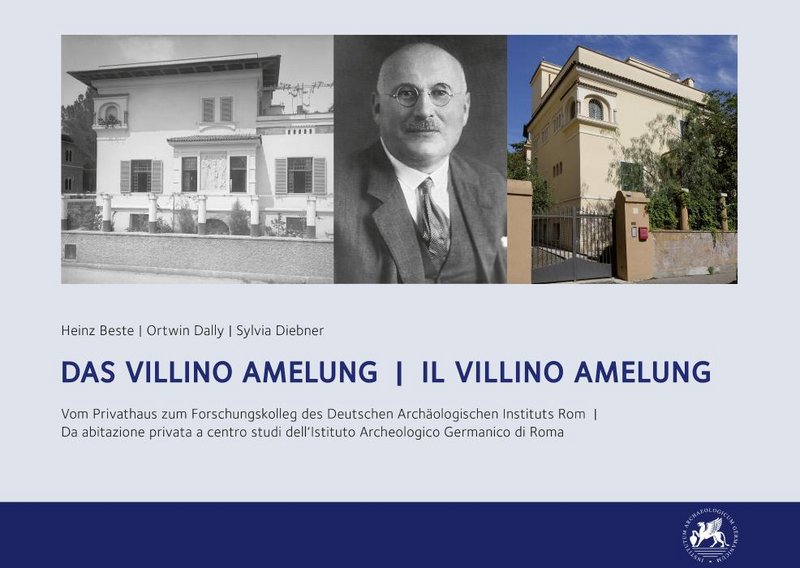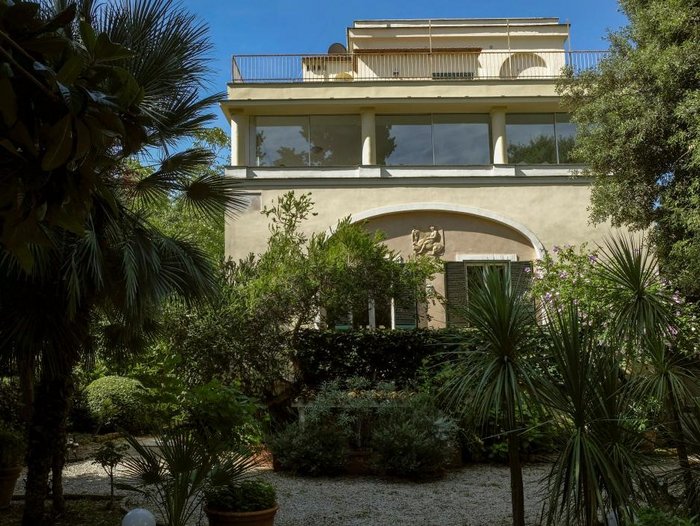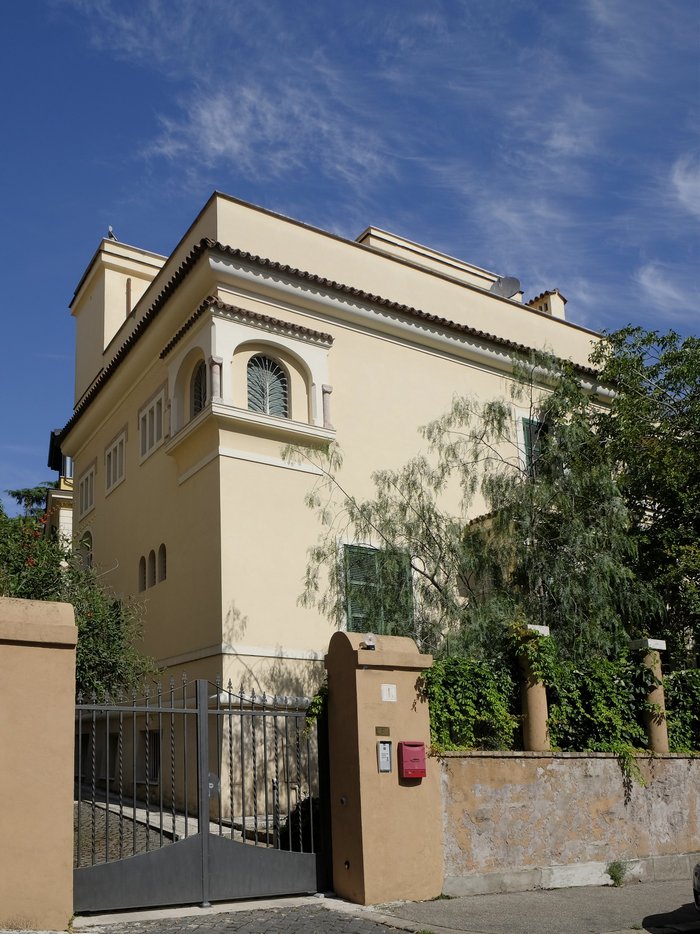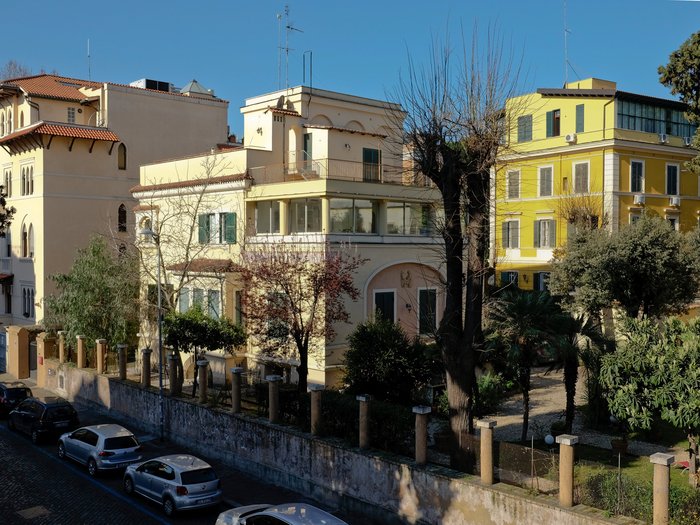
Gartenansicht des Villino Amelung (Bildnachweis: D-DAI-ROM-2014.1271) © DAI // Heide Behrens
Guest House – Villino Amelung
From a private house to the research college
In addition to the actual institute building in Via Sardegna, the Rome Department of the DAI runs a scholarly college in Villino Amelung. Built in 1904 by the later DAI Rome director Walt(h)er Amelung, Villino Amelung has since 1990 served for accommodating scholarship holders and scholars involved in the department's research ventures. The travel scholarship holders of the DAI are also accommodated here. A suitably furnished room has proved ideal for small-scale workshops and colloquia.
Address & Contact
Address: Via Andrea Cesalpino, 1b, 00161 Roma
Contact:
Via Sardegna, 79-81, 00187 Roma
Tel. +39 / 06 488 8141
E-mail: sekretariat.rom@dainst.de
The Villino Amelung is integral part of Germany's traditional implantations for scientific culture and practice in Rome. The building was commissioned by Walter Amelung (15.10.1865–12.09.1927), first director of the German Archaeological Institute in Rome after WWI from 1921 to 1927 and one of the most influential classical scholars of his time.
The Villino, a masterpiece of classicist-oriented architecture, was planned by architect Ernst Wille according to Amelung's personal requests. It was built in 1904/1905 on a plot just behind the Aurelian wall in today's Via Andrea Cesalpino 1b in the city's northern quarters. After Amelung's passing, the Villino became the property of the DAI. After having served for various purposes, it was eventually transformed into the Rome Department's research college.
The building's architecture and interiors, as well as the gradual evolution of its furnishings to some extent reflect the profound changes and hence also the political disruptions in Rome's recent history. Consequently, the building itself has become a relevant monument of the city's history and is now inextricably linked to its rich cultural heritage.

Publikation des DAI Rom 2019 zum Villino Amelung (Das Villino Amelung in historischer und heutiger Ansicht, dazwischen ein Porträt von Walther Amelung (1926)) © DAI
A separate brochure has been published about the Villino Amelung, its history, and namesake builder. For more information about the building, please contact the department at sekretariat.rom@dainst.de



